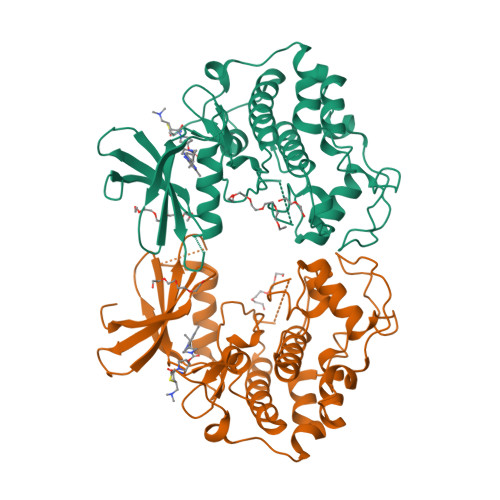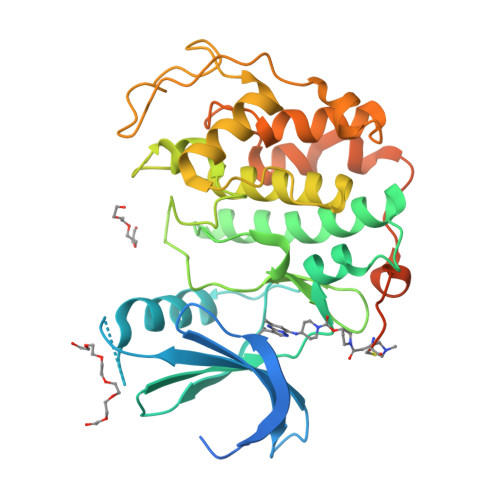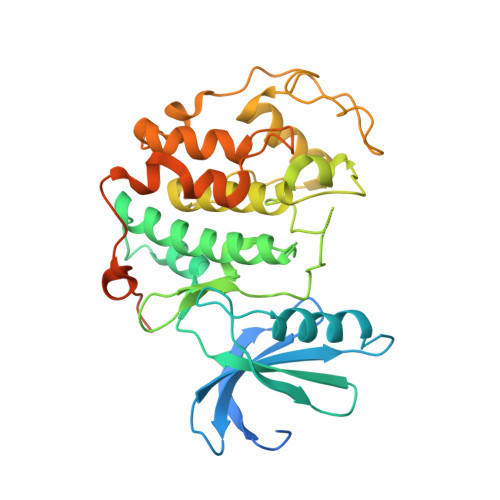Protein engineering enables a soakable crystal form of human CDK7 primed for high-throughput crystallography and structure-based drug design.
Mukherjee, M., Day, P.J., Laverty, D., Bueren-Calabuig, J.A., Woodhead, A.J., Griffiths-Jones, C., Hiscock, S., East, C., Boyd, S., O'Reilly, M.(2024) Structure 32: 1040-1048.e3
- PubMed: 38870939
- DOI: https://doi.org/10.1016/j.str.2024.05.011
- Primary Citation of Related Structures:
8R99, 8R9A, 8R9B, 8R9O, 8R9S, 8R9U, 8RU8 - PubMed Abstract:
Cyclin dependent kinase 7 (CDK7) is an important therapeutic kinase best known for its dual role in cell cycle regulation and gene transcription. Here, we describe the application of protein engineering to generate constructs leading to high resolution crystal structures of human CDK7 in both active and inactive conformations. The active state of the kinase was crystallized by incorporation of an additional surface residue mutation (W132R) onto the double phosphomimetic mutant background (S164D and T170E) that yielded the inactive kinase structure. A novel back-soaking approach was developed to determine crystal structures of several clinical and pre-clinical inhibitors of this kinase, demonstrating the potential utility of the crystal system for structure-based drug design (SBDD). The crystal structures help to rationalize the mode of inhibition and the ligand selectivity profiles versus key anti-targets. The protein engineering approach described here illustrates a generally applicable strategy for structural enablement of challenging molecular targets.
Organizational Affiliation:
Astex Pharmaceuticals, Cambridge CB4 0QA, UK. Electronic address: manjeet.mukherjee@astx.com.






















